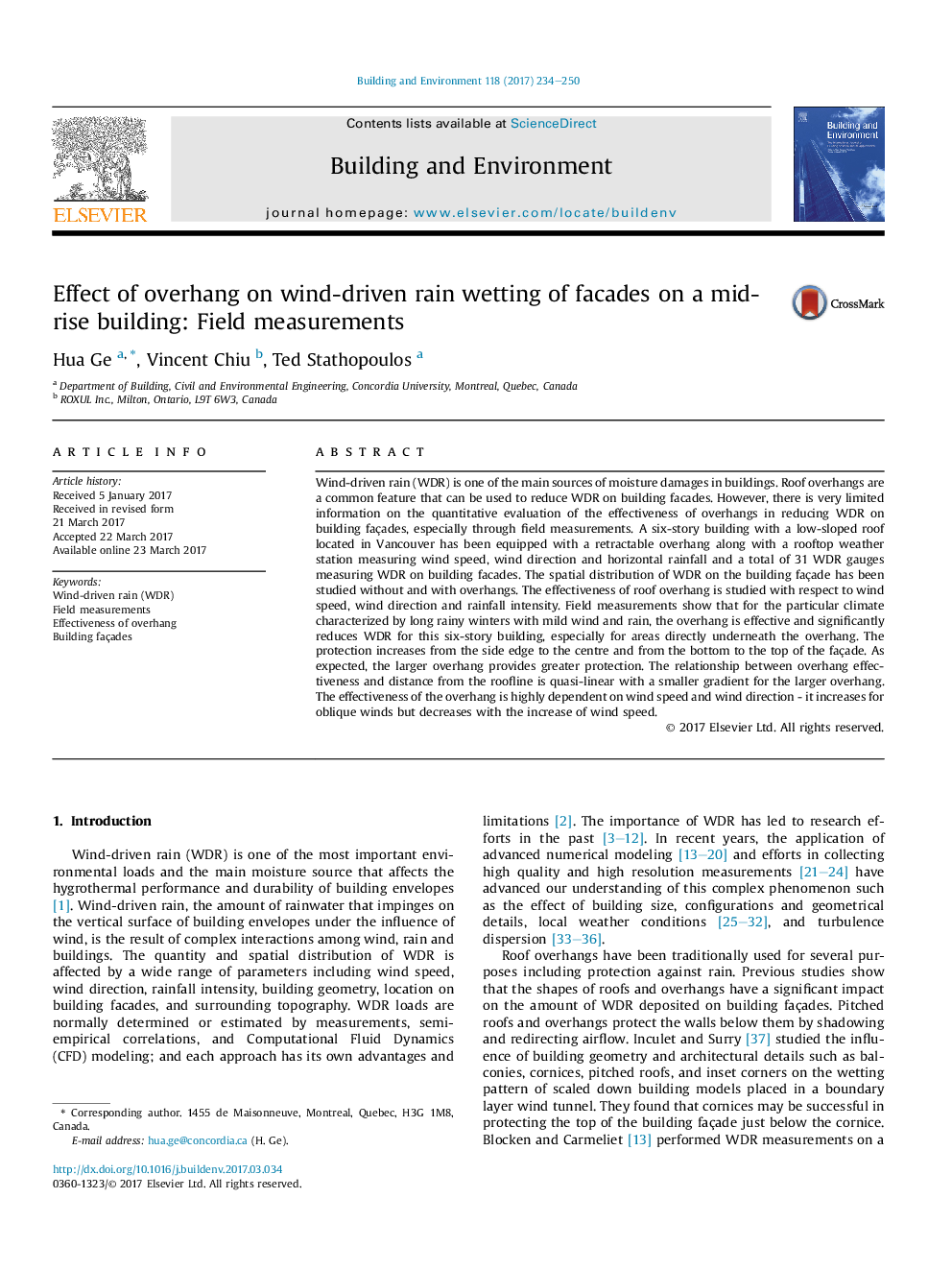| کد مقاله | کد نشریه | سال انتشار | مقاله انگلیسی | نسخه تمام متن |
|---|---|---|---|---|
| 6479273 | 1428374 | 2017 | 17 صفحه PDF | دانلود رایگان |
- Effectiveness of overhang on reducing WDR wetting of a six-story building is quantified by field measurements.
- Similarity and symmetry approaches used to evaluate the effectiveness of overhang show good agreement.
- Larger overhangs provide greater protection and protection increases from the side edge to the centre of the façade.
- Overhang effectiveness decreases with the distance from the roofline with a smaller gradient for the larger overhang.
- Effectiveness of overhang increases for oblique winds but decreases with the increase of wind speed.
Wind-driven rain (WDR) is one of the main sources of moisture damages in buildings. Roof overhangs are a common feature that can be used to reduce WDR on building facades. However, there is very limited information on the quantitative evaluation of the effectiveness of overhangs in reducing WDR on building façades, especially through field measurements. A six-story building with a low-sloped roof located in Vancouver has been equipped with a retractable overhang along with a rooftop weather station measuring wind speed, wind direction and horizontal rainfall and a total of 31 WDR gauges measuring WDR on building facades. The spatial distribution of WDR on the building façade has been studied without and with overhangs. The effectiveness of roof overhang is studied with respect to wind speed, wind direction and rainfall intensity. Field measurements show that for the particular climate characterized by long rainy winters with mild wind and rain, the overhang is effective and significantly reduces WDR for this six-story building, especially for areas directly underneath the overhang. The protection increases from the side edge to the centre and from the bottom to the top of the façade. As expected, the larger overhang provides greater protection. The relationship between overhang effectiveness and distance from the roofline is quasi-linear with a smaller gradient for the larger overhang. The effectiveness of the overhang is highly dependent on wind speed and wind direction - it increases for oblique winds but decreases with the increase of wind speed.
Journal: Building and Environment - Volume 118, June 2017, Pages 234-250
